Megalithic structures can be found all over the world, in almost every continent. While many megalithic and ancient ruins sites hold their share of mystery, some of the strangest megalithic monuments are the ones found in the most remote areas of the world – the middle of the Pacific Ocean.
 |
| Nad Madol ruins - (© Dea/V. Giannella/Getty Images) |
Of all stages of ancient human migration, tackling something as colossal as the Pacific Ocean is easily among the most challenging. Why any of these people left their native homelands to explore the vast expanses of the open ocean remains a mystery. While there is some archaeological data on the settling of the major Pacific islands, much of it is still open to debate.
 |
| Yes, this picture is from Disney's Moana, depicting the Polynesian's journey across the Pacific. |
Although we may not know all the details of how these islands were settled, we can still admire the legacy that these lost civilizations have left behind. Located thousands of miles from the nearest inhabited islands – here are a few of the most intriguing megalithic sites of the Pacific Ocean.
1. Nan Madol
 |
| Photo by CT Snow, Wikimedia commons |
This strange city is found in Micronesia and is made up of a series of over 100 artificial islands connected by canals. The city is actually built in a lagoon on top of a coral reef, surrounded by water on 3 sides. The architecture of the site is considered a marvel of ancient engineering, consisting of large pillars of basalt rock stacked in a criss-cross fashion, without the use of any mortar or cement. These stones are similar to the ones seen at Gunung Padang. While some of the stones are light enough to be carried by one person, others weigh well over 50 metric tons.
 |
| Columnar basalt stones at Nan Madol (left) and Gunung Padang (right). Photos by Svetlana (Nan Madol) and Flame Rozario (Gunung Padang) |
According to legend, the city was constructed by two sorcerers, with the help of levitating stones and a flying dragon. Considering that stones of this type are only found over 40 km away, it remains a mystery how the site was built.
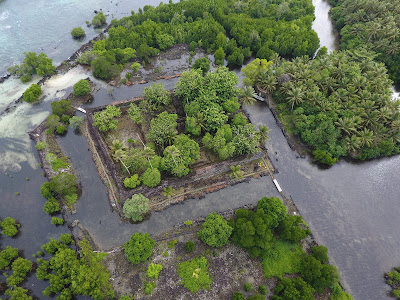 |
| Nan Madol from above- Drone image of Nan Dowas, collected with a DJI drone. |
Nad Madol has no fresh water or food, both of which need to be received by boat from other islands.
The earliest human activity dates to around 200 BC, although the main site of Nan Madol as we know it was constructed in roughly 1,500 AD.
The earliest human activity dates to around 200 BC, although the main site of Nan Madol as we know it was constructed in roughly 1,500 AD.
2. Lelu Island
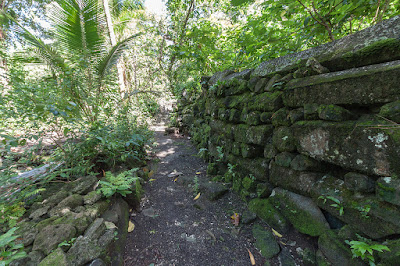 |
| Lelu Island Ruins, Wikimedia Commons, Maloff1 |
Located 500km east of Nan Madol, Leluh island is yet another ancient ruin to be found in the federated states of Micronesia. Historical accounts by European explorers describe the city as an extensive network of canals and compounds constructed of huge boulders and basalt pillars. As with Nan Madol, the stones were quarried from the opposite side of the island. Whether they were transported by land or sea, or how they were erected remains unknown. Coral was also used extensively in the construction of the city. The city comprises of housing, temples, tombs, and other sacred spaces.
3. Stone Money of Yap Island
 |
| Photo: top5.com |
To the west of Nan Madal, across a distance of 2,200 kilometers of ocean lies the island of Yap. On this island, we can find over 6,000 stone disks ranging in size and weight. The disks were important symbols of wealth, status and power. The stones were used as money, and their value increased based on craftsmanship or history. The smallest measures just 3.5cm across, while the largest stones stand 8 feet (3.6 meters) high, and weigh over 4 metric tons. The rocks were carved over 400 km from the island of Yap, and were at the time, the largest objects to be moved across the Pacific Ocean.
4. Pulemelei Mound, Samoa
Sometimes referred to as the “Samoan Pyramid,” the Pulemelei mound is the largest ancient structure in the Samoan islands. The pyramid is constructed of Basalt pillars, and stands 12 meters high. The structure consists of three levels, with slightly sloping walls.The base of the pyramid measure 60 x 65 meters, and is shaped with eight points or cogs, giving it the appearance of a star when viewed from above.
During a survey in 1978, archaeologists recorded more than 3,000 other features in the area, including stone platforms, fences, pathways, and ovens. The pyramid dates to roughly 1,100 AD.
5. Badrulchau, Palau
 |
| Photo: Sandwich, Wikimedia commons. |
This is the most ancient Megalithic site in Palau, dating to around 150 AD. The site consists of over 50 Basalt megaliths, some weighing over 5 metric tons. The stones include 6 massive heads, as well as the remains of what is believed to have been a large bai, or meeting house. Other notable structures include a large stone sarcophagus located on top of a small hill. Also on this island, we can find the stone quarry which was used to construct the Yap money, which was then transported 400 km across the Pacific Ocean by canoe.
6. House of Taga
 |
| House of Taga in 1902. |
The House of Taga is found on Tinian Island, part of the Northern Marianas Islands. This unique megalithic construction consists of a collection of stone pillars of roughly 4.5 meters in height. Each of the pillars is topped with a semi-spherical stone. Although there are roughly 15 of these standing stones, all but one has fallen. It is believed that these pillars were used as support for houses, to keep the inhabitants safe from flooding and wildlife.
7. Easter Island
We can’t quite go through megalithic sites of the Pacific Ocean without mentioning the famed Easter Island heads, (which also have bodies, as well all now know.) This volcanic island is an unlikely settlement, isolated over 3,700 kilometers from the mainland South America, and 1,700 kilometers from the nearest island. Scattered across the island are over 900 Moai, which are the giant heads that Easter Island is famous for. The island is said to have been settled by Polynesians around 400 AD, until the civilization met its eventual demise around 1860.

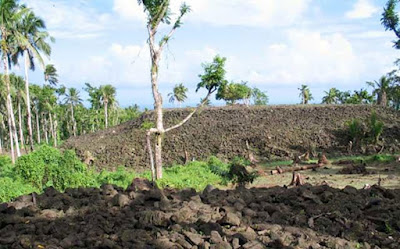
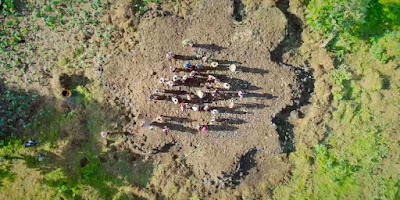
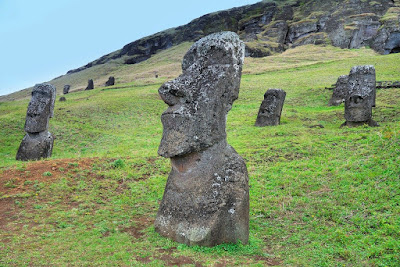

0 comments:
Post a Comment